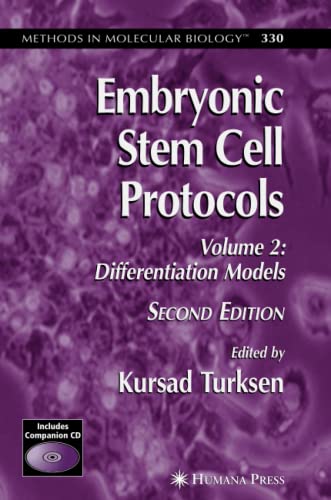It is clear that the potentials of assessing embryonic stem (ES) cells in regenerative medicine applications is evident in the ever-increasing publications in which ES cell biology and differentiation along diverse lineages appear in the academic as well as the popular press. These two new volumes present important advances in the field since the publication of Embryonic Stem Cells: Methods and Protocols four years ago. These two volumes provide an update and complement to that volume, focusing on ES cells recently isolated from other/non-mouse species. Each volume contains numerous updates, more advanced approaches, and completely new protocols for the use of ES cells in studies of diverse cell lineages. These two volumes will surely expand the experimental repertoires of both experts and novices in the field.
Drawing on the dramatically increasing research on embryonic stem (ES) cell biology and differentiation, Kursad Turksen has completely updated and expanded his highly acclaimed first edition of Embryonic Stem Cells: Methods and Protocols into two volumes. The second volume, Embryonic Stem Cell Protocols: Differentiation Models, Second Edition, covers state-of-the-art methods for deriving many types of differentiating cells from ES cells. A companion first volume, Embryonic Stem Cell Protocols: Isolation and Characterization, Second Edition, focuses on ES cells recently isolated from different nonhuman species, to provide a diverse collection of readily reproducible cellular and molecular protocols for the isolation, maintenance, and characterization of embryonic stem cells. The protocols follow the successful Methods in Molecular Biology series format, each offering step-by-step laboratory instructions, an introduction outlining the principles behind the technique, lists of the necessary equipment and reagents, and tips on troubleshooting and avoiding known pitfalls.
Authoritative and cutting-edge, the two volumes of Embryonic Stem Cells illuminate for both novices and experts not only our current understanding of the biology of embryonic stem cells and their utility in normal tissue homeostasis and regenerative medicine applications, but also provide detailed accounts of the tools required for successful work in the area.
